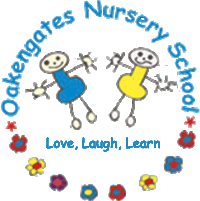Special Educational Needs, Disabilities (SEND)
Our Special Needs and Disabilities Coordinator (SEND Co) is Mrs Hannah Firmstone
Our vision for children with special educational needs and disabilities is the same as for all children. Our aim is to focus on learning outcomes as well as supporting greater independence. We want children to achieve so they go on to lead happy and fulfilled lives. We believe there are no obstacles too great to get in the way of the aspirations we have for our children. The Special Educational Needs and Disability Code of Practice (2015) plays a vital role and underpins everything we do to support our children. Children’s special educational needs and disabilities will be picked up at the earliest point with support routinely put in place swiftly. Children and their parents or carers will be fully involved in decisions about any support and what they want to achieve. Parents will also know about what services they can reasonably expect to be provided. Children learn at different rates and in different ways. We are committed to early identification, assessment and intervention. We work closely with the local authority and local health partners working together in the best interests of the child. The definition of Special Educational Need (SEN): Children have special educational needs if they have a learning difficulty which calls for special educational provision to be made for them. Children have a learning difficulty if they:
Children must not be regarded as having a learning difficulty solely because the language or form of language of their home is different from the language in which they will be taught. The definition of disability: A person suffers a disability if he or she has a physical or mental impairment that has a substantial and long-term adverse affect or his or her ability to carry out normal day-to-day activities. Physical impairment includes sensory impairments. Mental impairment can be learning difficulties or an impairment resulting from or consisting of a mental illness. Physical or mental impairments can include sensory impairments (such as those affecting sight and hearing) and learning difficulties. This definition also covers certain medical conditions when they have a long-term and substantial effect on pupils' everyday lives. The definition includes a wide range of impairments including hidden impairments such as Dyslexia, Autism, Speech and Language impairments, Attention Deficit Disorder. Some children have needs or disabilities that affect their ability to learn. The areas of need as outlined in the Code of Practice 2015, are:
We provide a rich, stimulating and creative curriculum for all children, taking into account approaches to complement their differing learning styles. Where children have additional needs they will be supported in accessing the full curriculum through specialist resources, adaptations, careful grouping and additional support from adults. |


